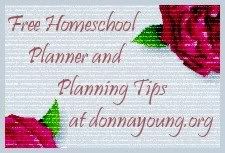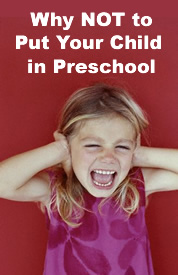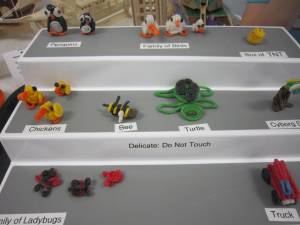I know it seems a little early to be thinking about Thanksgiving, but if you are gathering your ideas, books and materials for your Thanksgiving unit, it’s really just around the corner.
Remember to focus on “the main thing”, which is Thankfulness and praise to God–not just food and football. For MORE Thanksgiving book lists/ideas that will help you put the “thanks” in Thanksgiving, be sure to read the chapter, “Holidays and Traditions” in my book, Homepreschool and Beyond.
Concepts:
-Thanksgiving is a special day to thank God for all our blessings
-Thanksgiving is a time to think about all the things God has given us.
-Thanksgiving is a time to remember the first Thanksgiving long ago.
-When we celebrate Thanksgiving, we eat a special meal; usually turkey, stuffing, mashed potatoes and gravy, pumpkin pie, etc.
Memory Verses:
1 Thess. 5:18, Psm 100:4, Psm. 107:1, 1 Chronicles 16:34
*Older kids can memorize: Psalm 100, Colossians 3:17, 1 Thessalonians 5:16-18, Colossians 4:2
Vocabulary/Things to Learn About:
-Pilgrims, Indians, Native Americans
-Squanto, Samoset
-Harvest (what’s harvested in fall? What’s made from the things harvested in fall…apple pie, applesauce, pumpkin bread, and pumpkin pie)
-Thanks/thankfulness
-The first Thanksgiving
Books to Read:
Let’s Celebrate God’s Blessings on Thanksgiving, by Lisa Caldwell
Thanksgiving Is, by Gail Gibbons
Three Young Pilgrims, by Cheryl Harness
Sometimes It’s Turkey, Sometimes it’s Feathers, by Lorna and Lecia Balian
I’m Thankful Each Day, by P.K. Hallinan (the board book version; the longer version talks about telling “ghost stories”)
Let’s Celebrate God’s Blessings On Thanksgiving, by Lisa Caldwell
Pilgrim’s First Thanksgiving, by Ann McGovern 4-5+
Over the River and Through the Woods, (a book to sing), illustrated by John Steven Gurney
Three Young Pilgrims, by Cheryl Harness
Cranberry Thanksgiving, by Wende and Harry Devlin (out of print, but still fairly easy to find on Amazon/EBay.)
Books for Older Children (5-7+):
Squanto and the Miracle of Thanksgiving, by Eric Metaxas (this is a very special book! Older 4’s might be up to listening, but it is better for ages 5 to age 8.)
If You Sailed on the Mayflower in 1620, by Ann McGovern
Pilgrim’s First Thanksgiving, by Ann McGovern (5+)
Samuel Eaton’s Day, Sarah Morton’s Day, by Kate Waters 6+
On the Mayflower: The Voyage of the Ship’s Apprentice and a Passenger Girl, by Kate Waters (reads like it’s told by someone who experienced the voyage first-hand; beautiful true-to-life pictures.)
The Plymouth Thanksgiving, by Leonard Weisgard (ages 5—7)
The Pilgrims at Plymouth ( a Landmark picture book), by Lucille Recht Penner, for ages 6-9.
Books That I Haven’t Read, but that Look Appealing to Me:
Thanksgiving: A Time to Remember, by Barbara Rainey
Turkey Trouble, by Silvano/Harper
Music and Finger Plays:
Remember, these songs were passed down from mother to child or from teacher to teacher. Unless indicated, the original author is unknown. If you have any information about the original author, please let me know so that I can give credit where credit is due.
Be sure to check out You Tube for more children’s songs and activities that you might like.
Songs to sing:
Turkey Dinner (Tune: Frere Jacque)
Turkey dinner, turkey dinner, Gather round, gather round,
Who will get the drumstick? Yummy, Yummy drumstick?
All sit down. All sit down.
Cornbread muffins, chestnut stuffin’, Pudding pie, one foot high,
All of us were thinner, ‘Till we came to dinner,
Me-oh-my! Me-oh-my!
(Author unknown)
1 little, 2 little, 3 little Indians (I know this is “politically incorrect”, but we sing it anyway.)
Variation on 1 Little, 2 Little, 3 Little Indians:
Sing the first verse in the traditional way. Then sing the following verses:
1. They jumped in the boat and the boat tipped O-VER! (repeat 2 more times, then sing the traditional verse ending, “10 little Indian boys!”) (Motions: from sitting position, roll onto your back, and then up again every time your sing “o-ver!”.)
2. They swam and they swam and they swam to the shore (repeat 2 more times, and then sing the traditional verse ending, “10 little Indian boys!”) (Motions: Pretend to swim.)
3. So they ran and they ran and they ran to their mothers (repeat 2 more times, and then sing the traditional verse ending, “10 little Indian boys!”) (Motions: Make fingers “run”.)
4. She hugged and she hugged and she put them to bed (repeat 2 more times, and then sing the traditional verse ending, “10 little Indian boys!”) (Motions: Hug self.) (Author Unknown)
Hymns/Spiritual Songs to Sing:
Note: I tried to choose (mostly) the simpler songs that young children can easily sing and understand. Some of the traditional Thanksgiving hymns, such as “Now Thank We All Our God”, or “We Gather Together” are difficult either musically or in concept/vocabulary.
Doxology
Praise to the Lord, The Almighty
God is so Good
Count Your Blessings (does have some vocabulary to explain, but worth it)
Showers of Blessings
Indescribable by Chris Tomlin (one of my all time favorites! This one does have lots of vocabulary to explain…but you might find it to be a great thing to add to your devotional time.)
Our God is an Awesome God (Michael W. Smith)
I’m sure if you take some time and listen to your favorite praise and worship music, you will find even more…I love Michael W. Smith, Chris Tomlin, Avalon, Point of Grace, Mercy Me, etc etc…send me your ideas via the comments!!
Finger Plays:
5 Little Pilgrims
5 little Pilgrims on Thanksgiving Day.
The first one said, “I’ll have cake if I may.”
The second one said, “I’ll have turkey roasted.”
The third one said, “I’ll have chestnuts, roasted.”
The fourth one said, I’ll have pumpkin pie.”
The fifth one said, “I’ll have jam by and by.”
But before they had any turkey and dressing,
The Pilgrims all said a Thanksgiving blessing. (Hold up the correct number of fingers for each Pilgrim; fold hands as if to play a blessing.)
(Author unknown)
We Thank Thee
We thank Thee, oh God, for sunshine bright
(Arms up, fingers touching to make a sun)
For birds that sing at morning light.
(Touch thumbs together, fly bird)
For happy children everywhere,
(clap on bold print)
And for our mother’s loving care.
(Bow head, fold hands in a prayer posture.)
(Author Unknown)
The Brave Little Indian
The brave little Indian (hold fingers behind head for feathers)
Went hunting for a bear (Hold hands to shade eyes and “look”)
He looked in the woods and everywhere (make sweeping gesture with hand)
The brave little Indian found the bear (act surprised and scared)
He ran like a rabbit (fingers run)
Oh, what a scare! (Hand on head, shiver.)
(Author Unknown)
5 Little Turkeys
Art/Activities:
-Turkey handprints: Follow THESE directions or make the handprint with paint, and then glue on construction paper feathers.
IDEA: Make your turkeys on the front of paper that is folded to make a card. On the inside, write out this poem:
This isn’t just a turkey, as anyone can see.
I made it with my hand, which is part of me.
It comes with lots of love, especially to say,
I hope you have a very happy Thanksgiving Day!
(Author unknown)
–Indian Headbands
-Collage with things harvested in fall—popcorn, sunflower, and pumpkin seeds are especially appropriate
-Paint with corn on the cob (roll cob in paint, then roll onto paper.)
-Try making leaf prints (lightly paint the back of a leaf, then use to make a print) OR make paint prints with things harvested in fall (apples, cut several ways; green peppers; potatoes/sweet potatoes; onions, etc. Be sure to cut them the night before and let them dry out to get a clear print.)
Link to other fun ideas: (Remember, it is best to limit the number of crafts that have a set result or end “product”; preschoolers need more creative experiences. Be sure to choose only a couple of these types of activities. I like the ones that allow for at least some “creativity”, such as painting, etc.) Check out the ideas on the Crafts Kaboose .
Foods to Try/Cooking Experiences:
Pumpkin seeds, corn on the cob, persimmons, pomegranates, stuffing, sweet potatoes, cranberries, etc. It’s also fun to try a variety of nuts (they are harvested in fall!), and try cracking walnuts/peanuts and then eating them. For a really fun experience, try using your blender to make homemade peanut butter. HERE is a different recipe. that looks good, too. (Note: This is more of a “kids watch” type activity.)
-Make homemade applesauce
-Make cornbread
-Make homemade stuffing: I have my kids help lay the bread out to dry. Later, they break the bread and cornbread into small pieces for homemade stuffing.
Thanksgiving blessings to you and yours!
~Susan
© 2010 Susan Lemons all rights reserved. Copyrighted materials may not be re-distributed or re-posted without express permission from the author.
























